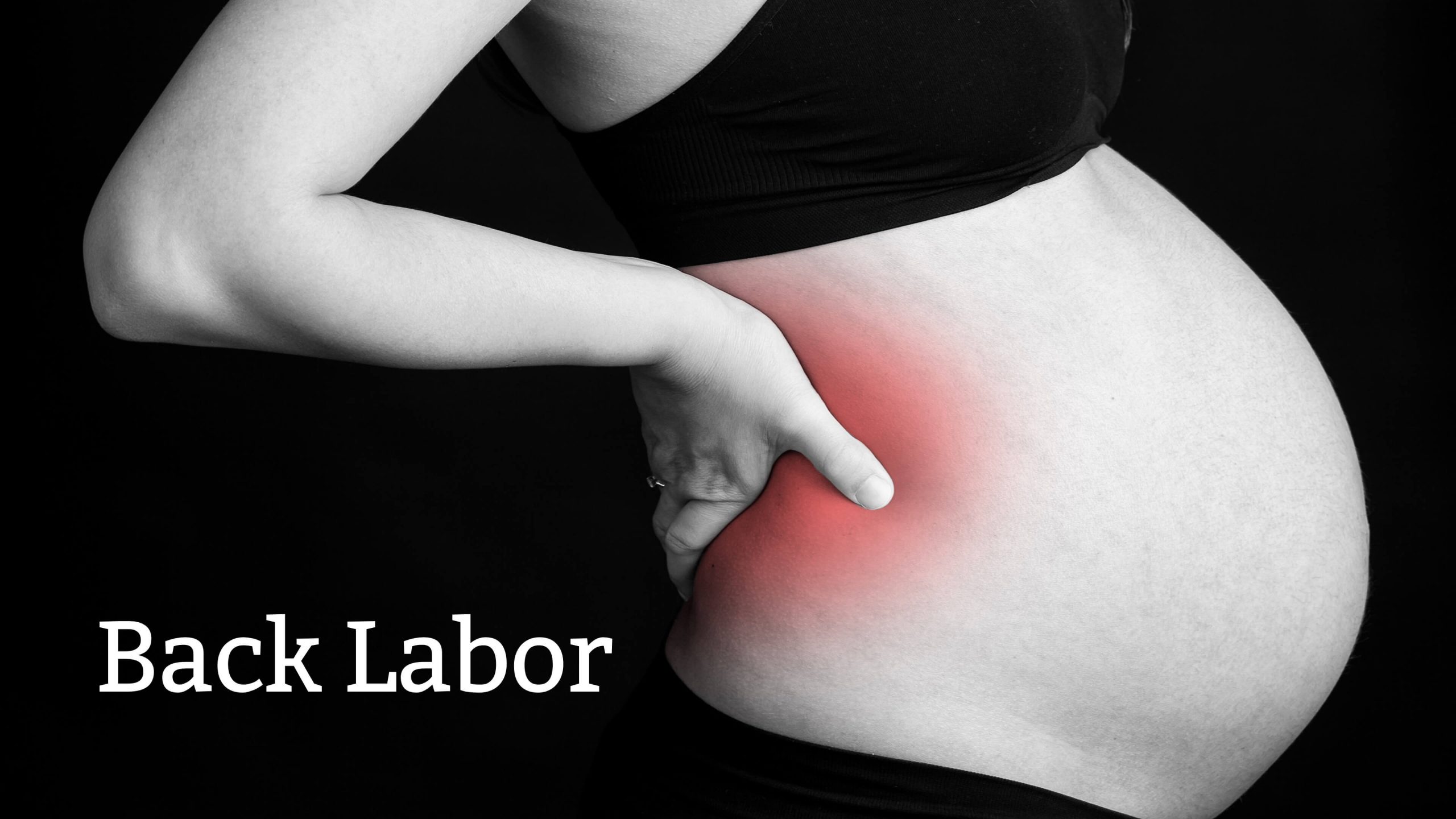Pregnancy and labor take a toll on physically, emotionally, and mentally. Exercise, diet, and rest are the three most important things to pay attention to in order to be strong and fit. However, there are several issues that can arise during a pregnancy that may not be prepared for. One of them is back labor.
What Is It?
During pregnancy sometimes women experience pain during labor which can occur in the abdomen and pelvic region but is most common in the lower back. This is called back labor. It occurs in around a fourth of all pregnant women, and the pain is usually severe and worse when going through contractions. This is most commonly assumed to be due to the force exerted by the fetus on the lower back.
Is It A Myth?
Labor begins when the muscles of the uterus contract. Gradually, those fist twinges will become more intense with each contraction beginning, reaching a peak and then fading away. As the contractions become more intense, they will last longer which is exactly what wanted, no matter how much to stop it when going through it.
These contractions are the tightening of the uterus as it pushes the baby lower into the birth canal. Most of the time, intense pain is felt, cramping, and pressure during active labor.
Usually, the pain felt will be center in the lower abdomen and pelvis. But 33% of women will feel more pain in the lower back sometimes due to how the baby is positioned.
In an ideal world, all babies would be born sunny-side down with the faces turned towards mom’s cervix. But in back labor, the little one’s face is sunny-side-up and the back of the head or the hardest part of the head in against the cervix.
So no, back labor is not a myth.
Symptoms
Back labor contractions are associated with several symptoms include –
- Pregnant women with back labor are likely to have a much longer and more painful birth.
- One of the early signs of labor back pain is the inability of women with posterior babies to feel when the contractions have started.
- Labor contractions that do not occur at regular time intervals.
- Extra time spent pushing during labor due to the awkward position of the baby.
Causes
According to studies, there are multiple factors that affect back labor. The causes are –
Position of the fetus
One of the most common reasons for back labor is how the baby is positioned inside the body. The ideal situation is when the fetus is upside down with the chin tucked into the neck and facing the back. But if the baby is facing the abdomen, its head can put pressure on the tailbone, causing more pain as the baby gets bigger. This is known as a posterior baby or a sunny-side-up baby.
Women with small waists
Women having small waists tend to have babies longer than the torsos which means that the baby exerts pressure on the mother’s back instead of the cervix due to lesser space.
Stiff ligaments
Pregnant women with rigid ligaments can make it tricky for the baby to find the right position in the uterus.
Wrong posture
Standing without bending knees slightly or tipping forward the pelvis increases the risks of back labor.
Injuries to the back or ligaments
A history of back or ligament injuries greatly increases the chances of developing back labor.
Shape of the pelvis
Occasionally, some women have pelvises that can only accommodate a fetus arranged in the posterior position.
Prevention
It is not possible to tell if there will be back labor when giving birth. However, fixing the position of the baby is one of the best methods to prevent back labor. In addition to getting the baby the right way up, visiting the chiropractor regularly will help to manage any developing pains. Ensure to get an ultrasound done to check the baby’s position often so can start treatments as soon as the baby is posterior. Also, visit the childbirth training class to receive advice and pain-relieving techniques.
Other comfort measures
- Give birth in a standing or kneeling position as it puts less pressure on the back.
- Staying on the hands and knees throughout labor is also helpful in relieving back labor.
- An alternative technique is injecting sterile water into the lower back which gives pain relief for several hours.
Management
Labor time is stressful enough for any women without having to deal with the physical discomfort of back labor. The management for back labor is easy to do and quite effective.
- Using hot and cold compresses alternatingly on the lower back.
- Steady counter pressure via a back massage will relieve some pain.
- Taking a warm bath or shower.
- Applying pressure by having cylindrical or spherical objects like bottles or balls, rolling down the back.
When To See A Doctor?
Good practice throughout the pregnancy is called the doctor if notice any new symptoms during pregnancy.
- Diarrhea – a sudden onset of loose stools can be a sign that labor is starting.
- Spotting (bloody show) can happen when the mucus plug that’s protected the baby from outside germs starts to loosen.
- Water breaking – feel a sudden gush of fluid, labor may be on its way.
Conclusion
Although back labor is incredibly painful, it does not indicate that anything is wrong with the pregnancy. The outcome of most back labor cases leads to normal birth. However, a few women might require an epidural to take care of the pain. The most important is to stay fit.
Sources:
- https://pubmed.ncbi.nlm.nih.gov/20092139/
- Https://www.healthline.com/health/preg













